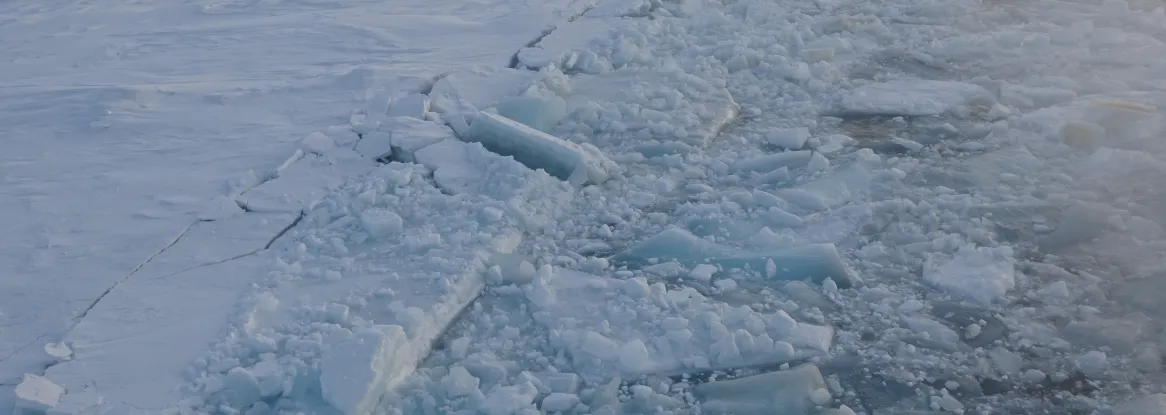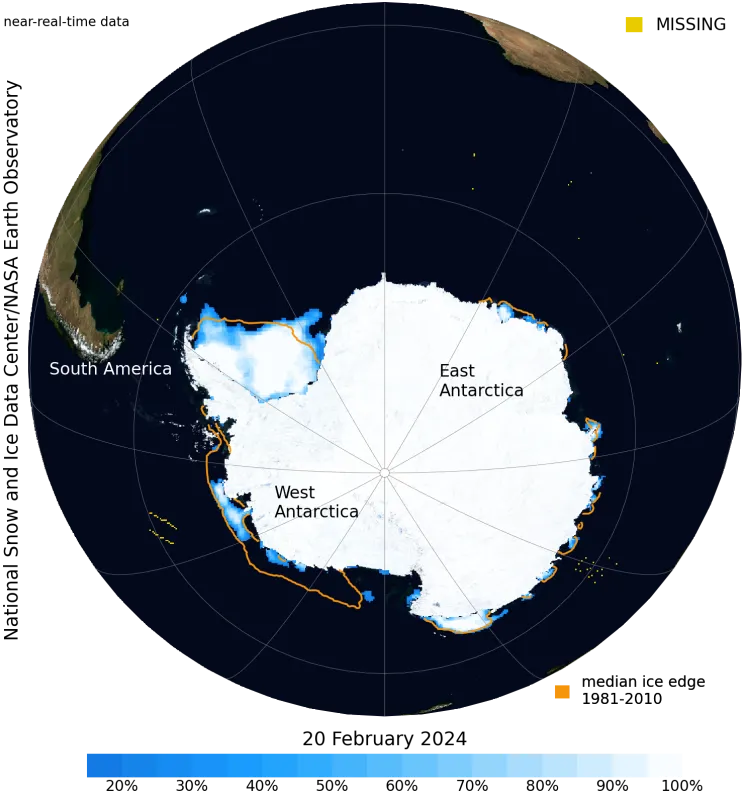Antarctic sea ice has likely reached its minimum extent for the year, at 1.99 million square kilometers (768,000 square miles) on February 20, 2024, according to scientists at the National Snow and Ice Data Center (NSIDC) at the University of Colorado Boulder. The 2024 minimum is tied with 2022 for second lowest in the 46-year satellite record. The record low occurred last year, with the ice reaching 1.79 million square kilometers (691,000 square miles) on February 21, 2023.
“Antarctica’s low sea ice extent in 2023 and culminating with this low 2024 minimum is nothing short of shocking. These consecutive lows have the potential to kick off real changes in ice sheet melting, snowfall on the ice sheet and warming of the surrounding ocean,” said senior research scientist Ted Scambos of the Cooperative Institute for Research in Environmental Sciences. “But Antarctica has shown huge sea ice variability in the recent past—setting record highs just 10 years ago. Connecting what we see in the sea ice with ocean changes is probably the key to understanding the cause, and the likelihood of persistence.”
NSIDC scientists stress that the Antarctic sea ice extent number is preliminary—continued melt conditions could still push the ice extent lower. NSIDC will issue a full analysis of the possible causes behind this year’s ice conditions in the Southern Hemisphere, interesting aspects of the melt season, the setup going into the winter growth season ahead, and graphics comparing this year to the long-term record in an upcoming Arctic Sea Ice News and Analysis post.
NSIDC is part of the Cooperative Institute for Research in Environmental Sciences at the University of Colorado Boulder. The NSIDC Arctic Sea Ice News and Analysis is supported in part by NASA.
For more details and images, read NSIDC’s Arctic Sea Ice News and Analysis page. See the NASA visualization here and video here.

